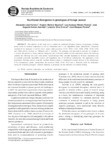Use este identificador para citar ou linkar para este item:
http://www.alice.cnptia.embrapa.br/alice/handle/doc/949471Registro completo de metadados
| Campo DC | Valor | Idioma |
|---|---|---|
| dc.contributor.author | FERREIRA, A. L. | pt_BR |
| dc.contributor.author | MAURÍCIO, R. M. | pt_BR |
| dc.contributor.author | PEREIRA, L. G. R. | pt_BR |
| dc.contributor.author | AZEVÊDO, J. A. G. | pt_BR |
| dc.contributor.author | OLIVEIRA, L. S. | pt_BR |
| dc.contributor.author | PEREIRA, J. M. | pt_BR |
| dc.date.accessioned | 2013-02-15T11:11:11Z | pt_BR |
| dc.date.available | 2013-02-15T11:11:11Z | pt_BR |
| dc.date.created | 2013-02-15 | pt_BR |
| dc.date.issued | 2012 | pt_BR |
| dc.identifier.citation | Revista Brasileira de Zootecnia, Viçosa, MG, v. 41, n. 4, p. 856-863, Abr., 2012. | pt_BR |
| dc.identifier.uri | http://www.alice.cnptia.embrapa.br/alice/handle/doc/949471 | pt_BR |
| dc.description | Abstract: The objective of this study was to evaluate the nutritional divergence between ten genotypes of forage peanut, based on chemical composition as well as fermentation and in vitro degradation kinetic characteristics. Treatments consisted of ten genotypes of Arachis pintoi, namely eight accessions (31135, 30333, 15121, 31828, 15598, 31534, 13251 and 31496) and two cultivars (cv. Belmonte and cv. Amarillo). The genotypes were harvested in each plot at a height of 3 cm from the ground, in 42-day intervals, during the time of heaviest rainfall. For the multivariate analysis the following variables, the following were used: crude protein, neutral detergent fiber, potential degradation in 48 hours, degradation rate of insoluble potentially degradable fraction and degradation rate of non-fibrous carbohydrate. The application of the hierarchical clustering analysis, using the Euclidian distances matrix of standardized averages allowed for the identification of five homogeneous groups. Among them, the accessions 31828, 31534, 15121 and cv. Belmonte stood out nutritionally among the remaining genotypes evaluated, depicting as promising for the utilization in ruminant feeding. | pt_BR |
| dc.language.iso | eng | eng |
| dc.rights | openAccess | eng |
| dc.subject | Amendoim forrageiro | pt_BR |
| dc.subject | Degradabilidade | pt_BR |
| dc.subject | Análise multivariada | pt_BR |
| dc.subject | Genotype environment interaction | pt_BR |
| dc.subject | Production | pt_BR |
| dc.title | Nutritional divergence in genotypes of forage peanut. | pt_BR |
| dc.type | Artigo de periódico | pt_BR |
| dc.date.updated | 2015-04-20T11:11:11Z | pt_BR |
| dc.subject.thesagro | Leguminosa forrageira | pt_BR |
| dc.subject.thesagro | Composição química | pt_BR |
| dc.subject.thesagro | Pastagem | pt_BR |
| dc.subject.thesagro | Ruminante | pt_BR |
| dc.subject.thesagro | Forragem | pt_BR |
| dc.subject.thesagro | Genótipo | pt_BR |
| dc.subject.thesagro | Método estatístico | pt_BR |
| dc.subject.thesagro | Gás | pt_BR |
| dc.subject.thesagro | Produção | pt_BR |
| dc.subject.nalthesaurus | Feeds | pt_BR |
| dc.subject.nalthesaurus | Chemical composition | pt_BR |
| dc.subject.nalthesaurus | Gases | pt_BR |
| dc.subject.nalthesaurus | Multivariate analysis | pt_BR |
| dc.subject.nalthesaurus | Arachis pintoi | pt_BR |
| dc.subject.nalthesaurus | Forage | pt_BR |
| riaa.ainfo.id | 949471 | pt_BR |
| riaa.ainfo.lastupdate | 2015-04-20 | pt_BR |
| dc.identifier.doi | http://dx.doi.org/10.1590/S1516-35982012000400005 | pt_BR |
| dc.contributor.institution | Alexandre Lima Ferreira, Universidade Federal de Minas Gerais (UFMG); Rogério Martins Maurício, Universidade Federal de São João Del Rei; LUIZ GUSTAVO RIBEIRO PEREIRA, CNPGL; José Augusto Gomes Azevêdo, Universidade Estadual de Santa Cruz; LEANDRO SILVA OLIVEIRA, CNPC; José Marques Pereira, Universidade Estadual de Santa Cruz/Comissão Executiva do Plano da Lavoura Cacaueira. | pt_BR |
| Aparece nas coleções: | Artigo em periódico indexado (CNPC)  | |
Arquivos associados a este item:
| Arquivo | Descrição | Tamanho | Formato | |
|---|---|---|---|---|
| apiNutritionaldivergence.pdf | 98,48 kB | Adobe PDF |  Visualizar/Abrir |









